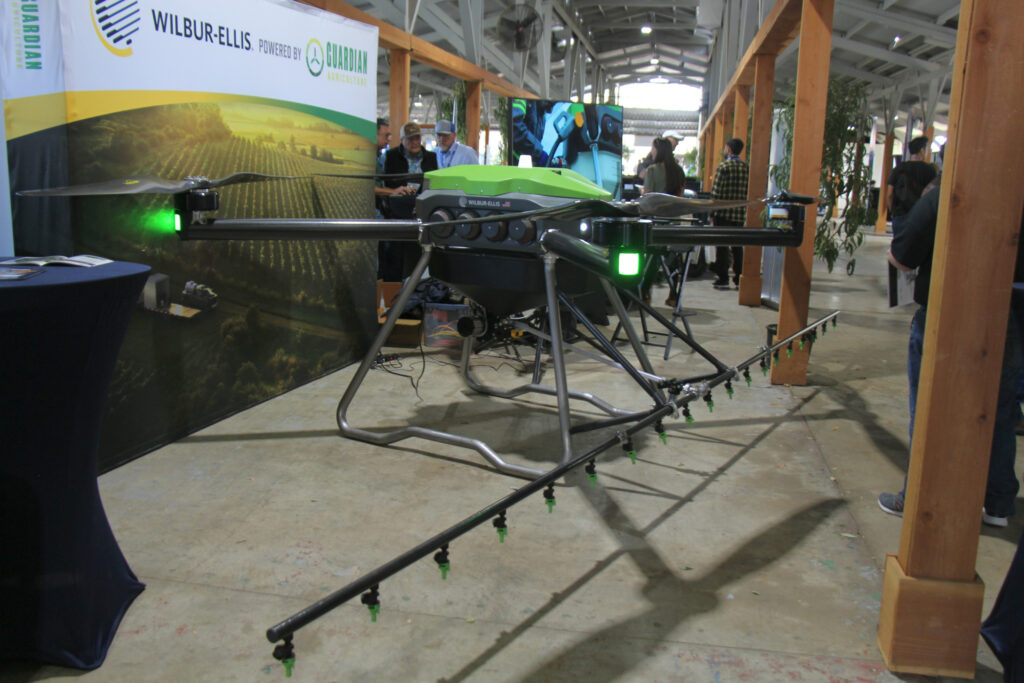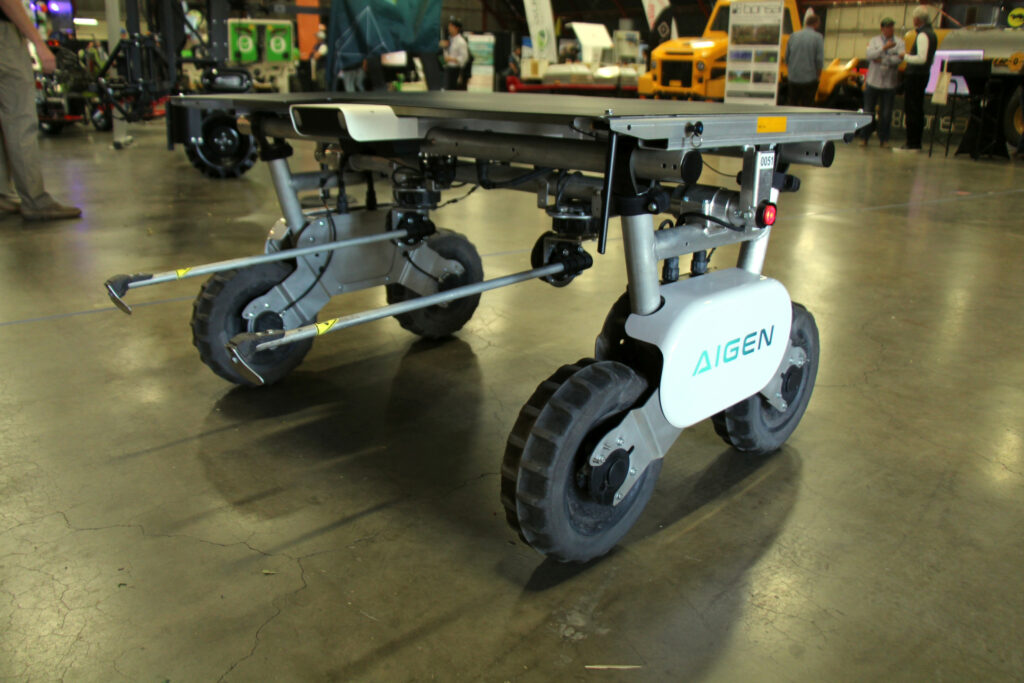FIRA USA 2024 – Drones take over aerial spraying

The American edition of the premier robotics event for open-field crops, FIRA, attracted 2,200 attendees from 38 countries to Woodland, California, from October 22 to 24. Among them were 500 growers, who primarily focused on evaluating weed control machines. This is part 2 of the highlights of the FIRA 2024. Read also part 1.
In the covered drone pavilion, several American drone service providers were present. Skysense, for example, uses standard DJI drones and cameras to detect weeds and count plants. These drones return to a docking station to recharge batteries and send the captured images. The cost starts at $10 per acre ($25 per hectare). A speaker on the drone can also be used to scare off wildlife.
Wilbur-Ellis, a supplier of seeds, fertilizers, and crop protection products, has partnered with American drone manufacturer Guardian Ag. Next year, Wilbur-Ellis plans to deploy six Guardian Ag SC1 drones with an 18-foot (5.5-meter) spray boom for spraying leafy greens and specialty crops in California’s Salinas Valley. A Wilbur-Ellis representative noted that the company once had the largest fleet of manned spray planes and helicopters, but the availability of pilots at the right time has become challenging. Field sprayer operators aren’t always available either, which is why they’re testing drones. The spray boom can be easily switched to use different products, both conventional and organic.
Text continues below picture

Weeding robot stays in the field all season
While most exhibitors focus on automation and robotics for California and Washington specialty crops, robot manufacturer Aigen is taking a different approach. The startup showcased its Element weeding robot, a small, four-wheeled field robot that is fully battery-electric and can keep 20 acres (8 hectares) of corn or soy weed-free on its own for an entire season, operating continuously in the field. The Element uses two mechanical weeding arms, each equipped with a small hoe. Weeds are detected by Intel RealSense cameras, and the robot navigates using AB lines established during planting. Cameras on the front and rear provide a remote view of the weeding process.
Read also: FIRA USA highlights in pictures part 2
So far, Aigen has built 50 of these field robots, with 30 providing weeding services for three farms last season. The Element will be available for purchase starting in 2026 for $50,000 each, with an additional $20,000 per robot fleet.
Text continues below picture

While the large grain-growing areas of the U.S. may not seem like an obvious market for weeding robots, research from the University of Illinois shows significant interest. More than half of the 251 farmers surveyed across 12 U.S. states expressed interest in weeding robots like the Aigen Element, largely due to increasing issues with herbicide-resistant weeds. Further research from Harper Adams University (UK) and Purdue University (U.S.) indicates that strip-cropping corn and soybeans in Indiana with autonomous vehicles generates $75 more profit per hectare than strip-cropping with manned vehicles. Strip-cropping itself yields an additional $191 per hectare compared to monocultures, according to the researchers.



